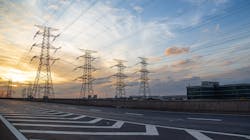When I was a young boy and the electricity would go out, it was fun. Since we had a wood stove, it usually meant that my extended family and their friends would all come to our house and we would play Monopoly or Risk all day long. When we did need something from the store, we would go down to Long’s Hardware on the square and sure enough, Mr. Long would be there. Even though there was no power, he would have flashlights to use and you could pay cash or write a check and the (mechanical) cash register would work. Wood’s grocery store would be open too. I specifically remember one extended week-long outage during an ice storm in December of 1972 when my grandfather had recently butchered a cow. He brought it over to bury in the snow to keep frozen. We cooked steaks and burgers on the outdoor charcoal grill for breakfast, lunch, dinner, and even desert (we got the charcoal from Mr. Long). For some reason, nobody would eat the tongue though.
Nearly 50 years later however, the expectations from the public — and me — for consistent electricity has significantly increased. We do have a Monopoly board game, but not Risk. I don’t have a wood stove in my house now, but I do have a generator. I can’t go to the Big Box store and buy anything because the registers and the credit card machines don’t work, and of course the automatic doors don’t open. I do have a grill, but as fate would have it the tank is out of propane and I can’t exchange it since the Big Box store is closed. The internet is down, and my kids are upset because they can’t watch AppleTV or play X-Box. And of course my cell phone is not charged. Outages simply aren’t fun anymore.
Today, the public expects the lights to come on when they flip the switch — Reliability. In the event of an outage, the public also expects the power to be back up quickly — Resilience. Those are the ‘R Words’ and unfortunately many don’t want to talk about them. The National Electrical Safety Code (NESC) so far has specifically voted not to address the ‘R Words’ in the upcoming 2022 edition. The understandable rationale is that the NESC is a safety code, not a Reliability or Resiliency code. By the way, the preprint is available at https://engagestandards.ieee.org/NESCPreprintandWorkshop.html now if you would like to provide a comment on any of the proposed changes — or maybe more importantly, non-changes.
So what codes are available to address the ‘R Words’? The American Society of Civil Engineers (ASCE) has a Structural Engineering Institute (SEI). As you would expect, these are the folks who develop many structural standards that are used throughout our infrastructure. Most notably of these is ASCE/SEI 7-16; Minimum Design Loads and Associated Criteria for Buildings and Other Structures. ASCE Manual of Practice (MoP) 74; Guidelines for Electrical Transmission Line Structural Loading exists to interpret ASCE 7 for use in overhead lines. The latest edition only uses a 50-year Mean Recurrence Interval (MRI). As ETS Chair Wes Oliphant discusses in his article later in this supplement, an updated edition will be published soon. It will use a 100-year MRI. This is still well below the ASCE 7 300-year MRI minimum Risk Category I used for pole barns, but it is an improvement. If you would like to explore the ASCE 7/74 meteorological loadings for your specific area, see https://asce7hazardtool.online/. You can log in as a guest and see your wind speeds for any of the risk categories as well as the 50- and 100-year MRIs.
For those of you not familiar with MRI, think of it as a percentage; a 100-year MRI means a 1/100, or a 1% chance in exceeding that event in any given year. The traditional 50-year MRI of course means a 1/50, or a 2% chance. The NESC does reference these ASCE 74 loads, but overhead line structures less than 60 feet tall are exempted from meeting even this 50-year MRI; for those structures the chances of exceeding loadings in many locations are even higher. By comparison, pole barns have a 0.33% chance of exceeding their design loadings.
So back to those dreaded ‘R Words’: What can we do to improve them? For starters, we can design all newly installed or upgraded facilities, regardless of height, for a higher MRI; this will definitely address the first R word; reliability. While this doesn’t directly address the second R word, resiliency, the more reliable a line is (e.g. less failures during an event), the quicker those failures can be repaired, which of course increases resiliency. By the way, the overall cost of an installed overhead line, going from a 50-year MRI to a 100-year MRI, or even a 300-year MRI does not significantly impact the overall project cost.
Maybe it’s time that we start thinking about making our pole lines more reliable than a pole barn?
About the Author
Otto J. Lynch
Otto J. Lynch is president and CEO, Power Line Systems. He is a member of American Society of Civil Engineers, IEEE, and National Electrical Safety Code. He is a registered professional engineer.
